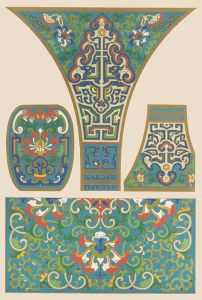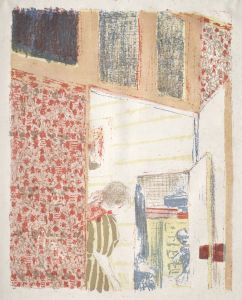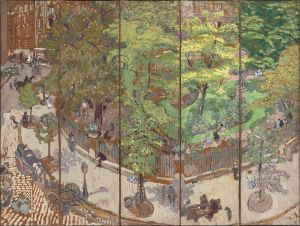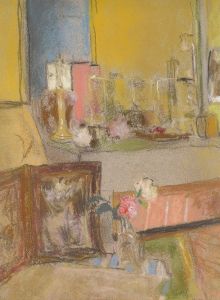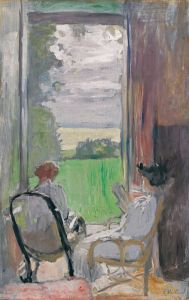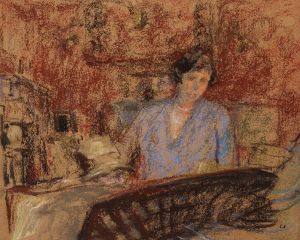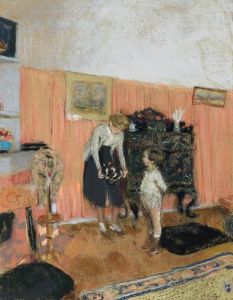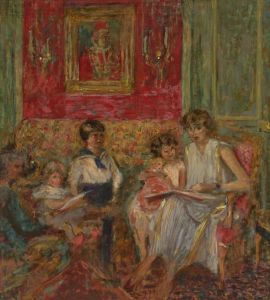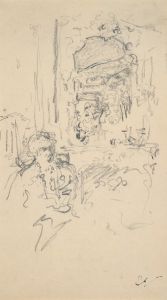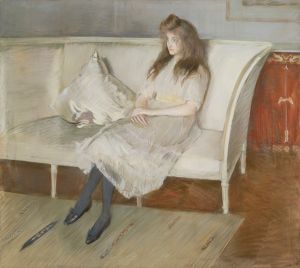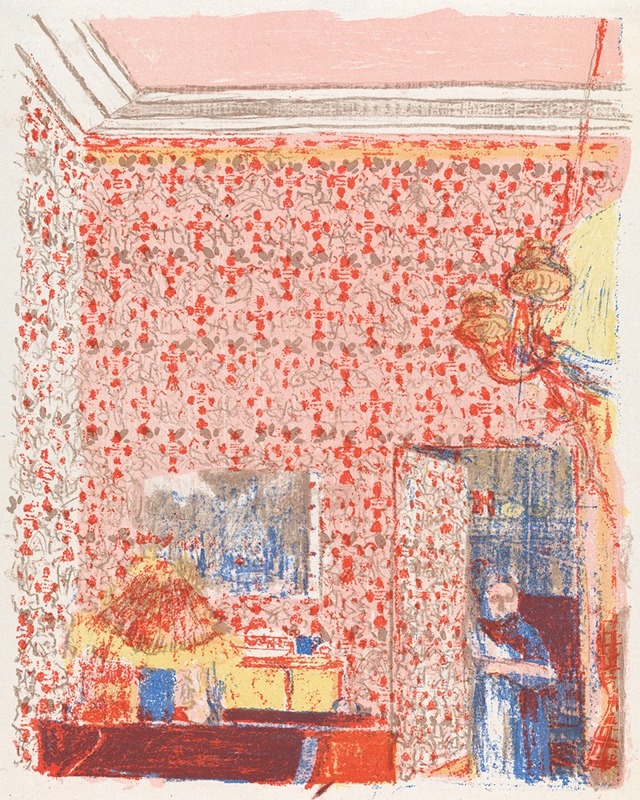
Interieur aux tentures roses I
A hand-painted replica of Édouard Vuillard’s masterpiece Interieur aux tentures roses I, meticulously crafted by professional artists to capture the true essence of the original. Each piece is created with museum-quality canvas and rare mineral pigments, carefully painted by experienced artists with delicate brushstrokes and rich, layered colors to perfectly recreate the texture of the original artwork. Unlike machine-printed reproductions, this hand-painted version brings the painting to life, infused with the artist’s emotions and skill in every stroke. Whether for personal collection or home decoration, it instantly elevates the artistic atmosphere of any space.
Édouard Vuillard's "Interieur aux tentures roses I" is a notable work by the French painter, who was a prominent member of the Nabi group, an avant-garde movement in the late 19th and early 20th centuries. Vuillard is well-known for his intimate domestic interiors and his ability to capture the subtleties of everyday life, often featuring family members and friends in his compositions.
"Interieur aux tentures roses I" is an exemplary piece that showcases Vuillard's distinctive style, characterized by its use of rich patterns, textures, and a warm color palette. The painting is part of a series of interior scenes that Vuillard created, which often depict rooms adorned with elaborate wallpapers and fabrics, reflecting the artist's fascination with the interplay between figures and their environments.
In this particular work, Vuillard employs a harmonious blend of pinks and reds, which dominate the composition and create a cozy, enveloping atmosphere. The "tentures roses" or "pink hangings" in the title refer to the drapery or wallpaper that forms the backdrop of the scene. Vuillard's use of color is both expressive and decorative, contributing to the overall mood of the painting.
Vuillard's technique often involved the use of distemper, a type of paint made by mixing pigments with a binding medium such as glue. This medium allowed him to achieve a matte finish and soft edges, which are evident in "Interieur aux tentures roses I." The painting's surface is characterized by its subtle textures and the gentle blending of colors, which enhance the intimate feel of the scene.
The composition of "Interieur aux tentures roses I" is typical of Vuillard's work, where the boundaries between figures and their surroundings are often blurred. This creates a sense of unity and continuity within the painting, as the figures seem to merge with the patterns and colors of the interior space. Vuillard's attention to detail and his ability to capture the nuances of light and shadow further contribute to the painting's depth and complexity.
Vuillard's choice of subject matter reflects his interest in the private and personal aspects of life. His interiors often serve as a backdrop for quiet, introspective moments, inviting viewers to contemplate the relationships between the figures and their environment. In "Interieur aux tentures roses I," the focus is on the atmosphere and the emotional resonance of the space, rather than on any specific narrative or action.
The painting is a testament to Vuillard's skill as a colorist and his ability to convey mood and emotion through his art. It exemplifies the artist's commitment to exploring the decorative potential of painting, while also capturing the essence of everyday life. Vuillard's work, including "Interieur aux tentures roses I," continues to be celebrated for its innovative approach to composition and its contribution to the development of modern art.
Overall, "Interieur aux tentures roses I" is a significant example of Vuillard's oeuvre, highlighting his mastery of color, texture, and composition. The painting remains an important piece within the context of early 20th-century art, reflecting the broader trends and influences of the Nabi movement and Vuillard's unique artistic vision.





